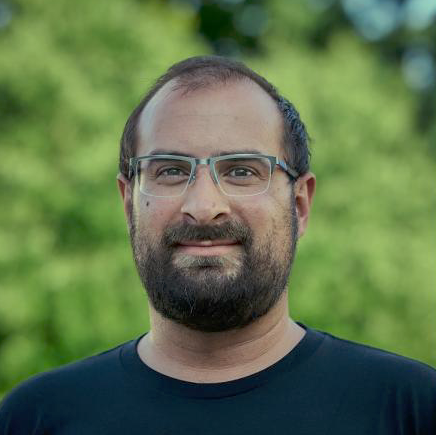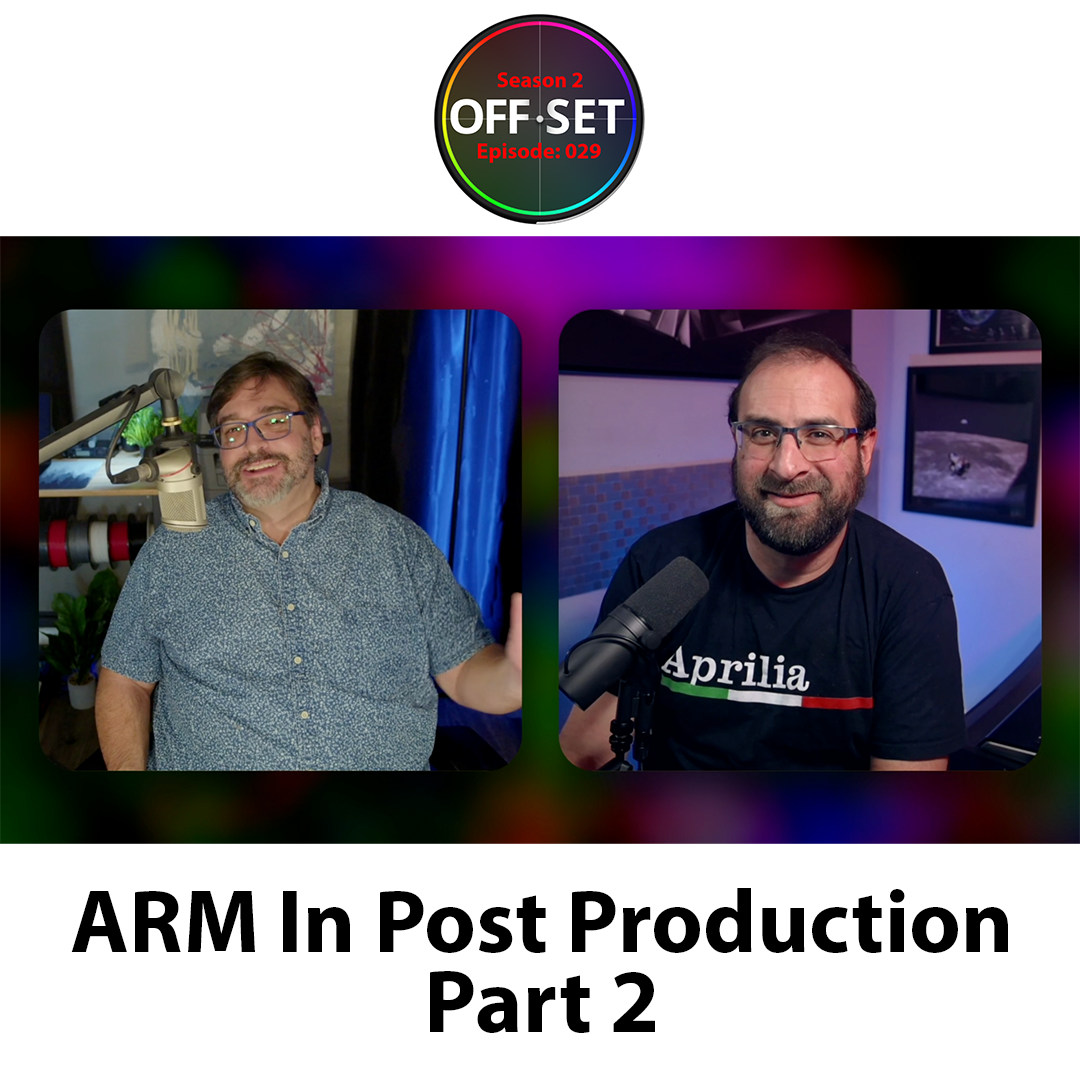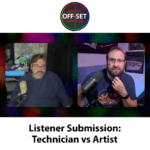EP029: ARM In Post Production Part 2
More Thoughts On ARM
In this episode, we continue our discussion about ARM-based computing and its impact on postproduction. If you missed part 1 in this series, be sure to check that out, as we cover a lot of helpful background information.
In this show, some of the specifics discussed include:
- How ARM will factor into our next workstation purchases
- Do we think Apple will deliver on a ‘beast mode’ Mac Pro
- Will Apple Silicon ever support discreet GPUs
- How ARM Linux systems are very appealing from a hardware point of view but have software challenges
- Is widespread adoption of ARM an inflection point for cloud-based workstations for the masses
- A side effect of cloud-based workstations might be faster feature/bug fix deployment – Why the future of workstations is really exciting
LIKE THE SHOW?
If you like The Offset Podcast, we’d love it if you could do us a big favor. It’d help a lot if you could like and rate the show on Apple Podcasts, Spotify, YouTube, or wherever you listen/watch the show. Thank you!
-Robbie & Joey
Video
Links
Transcript
00:00:00:01 - 00:00:16:19
Robbie
Hey there and welcome back to another episode of The Offset Podcast. And today we're continuing our conversation about ARM processors and the future of ARM. In the post industry, Stay tuned
00:00:16:20 - 00:00:35:13
Joey
This podcast is sponsored by Flanders Scientific leaders in color accurate display solutions for professional video. Whether you're a colorist, an editor, a DIT, or a broadcast engineer, Flanders Scientific has a professional display solution to meet your needs. Learn more at Flanders scientific.com.
00:00:35:15 - 00:00:48:15
Robbie
All right. Well. We couldn't get enough, man. We couldn't get enough in part one. Everybody, welcome back to another installment of The Offset Podcast. I am Robbie Carman with me as always, is my partner, Joey D’Anna. Hey, Joey. How are you, man?
00:00:48:17 - 00:00:50:00
Joey
Hey. Welcome back.
00:00:50:02 - 00:01:11:16
Robbie
Yeah, man. Welcome back. So, we obviously had a lot to talk about about ahm, in general and, decided to break this up into two parts so they're a little easier to digest. And when one sitting and so we are continuing on talking about ARM processors, and the future of ARM in post here in part two, we had a lot of good stuff we covered in part one.
00:01:11:17 - 00:01:30:08
Robbie
But in part two, I want to get a little bit more into some of our prognostication where we kind of think our necks what our next computer choices might look like, things like, cloud computing with ARM and stuff like that, and kind of, you know, prognosticate a little bit, about where we think, things are going.
00:01:30:10 - 00:01:45:05
Robbie
And of course we're not, you know, we're not, fortune tellers, but I think we have a pretty good idea with connecting some of these dots where things might be going. And I think this is going to be an exciting year, for arm and for our industry using ARM as well.
00:01:45:08 - 00:02:04:17
Joey
So let's talk about what I kind of consider the what is the next computer question? Because we've been talking about this a lot. You know, what is my next workstation is is something I think about a lot, because, you know, that main workstation is making me all my money. It is the most, one of the most important tools in my toolset.
00:02:04:19 - 00:02:29:01
Joey
And, you know, you've moved from the Intel Mac Pro to the latest and greatest Mac studio, and it's been performing really well for you. It actually performs better than my Intel Mac Pro in a lot of workloads. And it's a really good primary computer. But I'm looking at the workstation purchase as a, you know, 7 to 10 year long investment.
00:02:29:03 - 00:03:01:09
Joey
And I want to get the most professional, the most rock solid, reliable, performant, incredible machine that I can just beat on all day, every day. And I don't think Apple is quite there yet with their product line. Obviously they do have a ARM Apple M-series Mac Pro now. It's essentially a mac studio. In the bigger case, the only thing you get is some PCI slots, but because it doesn't support discrete GPUs, there's not much use for that.
00:03:01:09 - 00:03:03:10
Joey
You get it for your deck. Like, I'm not sure.
00:03:03:10 - 00:03:09:22
Robbie
That's a word network card or, you know, oh, get me card or something like that.
00:03:10:00 - 00:03:34:02
Joey
To me, here's the fundamental question. We've already mentioned that Apple and using SoCs, they scale up by quantity. Right. So you get the fastest so you can get then you make two of them. You interconnect them. Right now at some point you make it such a big, big unit that even your little Mac studio can't dissipate the heat or can't provide it enough power.
00:03:34:02 - 00:04:00:05
Joey
Yep. That's where I think the next generation Mac Pro could excel, because that chassis we know can deliver. I think it's like a 1500 or a 2000 watt power supply in that they can deliver tons of power and it can remove and dissipate massive amounts of heat. So right now, between the Mac Studio on the Mac Pro by the Mac Studio all day long because it's the Mac Pro is no faster, right?
00:04:00:07 - 00:04:05:05
Joey
They're not using that chassis to anywhere near it's Mac.
00:04:05:05 - 00:04:11:11
Robbie
Yeah, it was something they already had the R&D and the investment in. Why retool if you don't need to just drop in.
00:04:11:13 - 00:04:35:08
Joey
Here's here's the question for Apple and me. And this is how. And this is what it comes down to. Are me and Apple going to stay workstation friends? Because I like you said at the very beginning, we go with what is the best tool for the job. At the time, I've gone from Linux, I've gone from windows NT to Iris to Linux to Windows again to Mac.
00:04:35:10 - 00:05:01:15
Joey
Could be Linux again, could be windows again. Whatever. Whoever's making the best workstation is where I'm going to go every time. That's what brought me back to the Mac. Was that 2019 Mac Pro now what's going to keep me on the Mac is if Apple does the following. They take some of these big, beautiful SoCs that they have and they somehow get four of them interconnected together.
00:05:01:17 - 00:05:31:21
Joey
And that thing puts out enough heat and takes enough power that they actually really need to put it in that Big Mac Pro chassis to make it work. That will be a monster machine. The fundamental question that you came up with, I think, is will they keep on using their own GPUs on the die, or will they make their own external GPU make the die CPU only and it's like have tons of CPU and GPU.
00:05:32:02 - 00:05:50:23
Joey
I think that configuration is unlikely. I don't think we're going to see a mac with discrete GPUs probably ever again. I don't think Apple wants to be in the business of making PCI cards. I don't think they want to be in the business of selling upgrade kits. They want to sell you a box that you use until it's done.
00:05:51:01 - 00:06:03:20
Robbie
Let me interrupt for a second, because I had one thought about this. I tend to agree. I think that they have too much R&D and investment in the architecture that they've designed to have it for a relatively niche product. You know, they.
00:06:03:20 - 00:06:06:00
Joey
Cannot reinvent the wheel for the Mac Pro.
00:06:06:05 - 00:06:30:01
Robbie
Right? You know, they can't pour in millions and millions of dollars to something that's going to sell thousands, maybe tens of thousands of units versus the millions of units that they sell for their on the machine. So I agree with that part. I will say, though, that we've been thinking about this, this move over and maybe some clouded by slightly biased fashion.
00:06:30:01 - 00:06:52:13
Robbie
And that is one that somebody else doesn't move the needle. Right. So so far Qualcomm and Snapdragon that's been mobile products that's been like you know like the laptop behind me that's been for those kind of things. You know Microsoft Qualcomm like there hasn't been like a consumer push yet into more desktop workstation type computers in a major way.
00:06:52:13 - 00:07:07:14
Robbie
I mean they have a little bit. But but those companies, they've kind of ceded that to. We'll get to this in a minute. They've kind of ceded that to, Nvidia who's part owner and arm and other, you know, more data center focused type of machines. So that could be that could push Apple a little bit in that direction.
00:07:07:14 - 00:07:25:18
Robbie
But two, I think we've been thinking about it in the traditional form factor, like so when the Mac studio came out, I think besides the arm stuff, it was like, wow, that is a weird design, right? Like in principle, it was like, that is a weird box. It's a big square, not a little square, and it's not a workstation size of a tower.
00:07:25:18 - 00:07:55:02
Robbie
It's not a racking. So I think there is potential for you know, I think the current Mac Pro is A5U chassis, right? You know, and it has a lot of space in it for all the things we talked about, you know, PCI slots and you know, Ram and all kind of stuff, I think it is possible that they could reinvent that chassis a little bit to take, take advantage of something that's like, hey, maybe we go from maybe we lose the PCI cards, but we go to, a two you or a one you even, you know, likely.
00:07:55:02 - 00:08:02:19
Robbie
Probably not, because I think they don't want to have to reinvent, reinvent the wheel for, a niche product, but that kind of thing is always within there.
00:08:02:21 - 00:08:24:18
Joey
Yeah. So the question is, do they where do they go next? They build a bigger Mac studio or do they build an epic Mac Pro? Oh, personally, I think for most people, the bigger Mac studio would be a wonderful choice for me. I prefer a level of professional ality and a work computer that is above the Mac studio.
00:08:24:23 - 00:08:47:13
Robbie
And. And just to be clear, just to be clear, because you I know this, but our audience probably doesn't. Joey Joey has some very, strong opinions on things like thermal performance, connectivity, placement, things, things of that nature. And, you know, I own four Mac studios and various put in various places at home and at the office and stuff.
00:08:47:15 - 00:09:05:19
Robbie
And it's it's a little bit of a hack job, right? It's like, okay, fine, till I get them in a rack mount. I had to buy a case for the rack, Mount them. Okay. To get PCI slots, depending on Thunderbolt expansion. Oh, but wait, I want to rack mount. Well, that's even more like. So to get it, to get it to operate like a workstation is a little bit of a hatchet job.
00:09:05:20 - 00:09:14:02
Robbie
But again, Apple might not go down that route. They might just say, this is not worth our R&D. And in time to to please Joey and Rob.
00:09:14:03 - 00:09:14:15
Joey
And I.
00:09:14:19 - 00:09:15:06
Robbie
We're out of that.
00:09:15:06 - 00:09:41:07
Joey
Market. I think that's a likely outcome. Honestly, I'm holding out hope that they come out with a big bad Mac Pro that meets my standard of workstation, but I think it's unlikely that they will. And just to go into a little bit more detail, I, you know, arm wall being not new, as we've said, is new to macOS and is new to a lot of the fundamental software that we use.
00:09:41:07 - 00:10:08:00
Joey
I don't mean just Da eventually resolve or Adobe or anything else. Just about any modern software is built on piles and piles and piles of libraries that handle certain parts of the code, whether it be file IO, whether it be dealing with strings, whether it be dealing with times and dates, there's there's thousands of libraries that all had to be kind of ported and optimized and compiled for Mac on ARM.
00:10:08:00 - 00:10:09:19
Joey
That's why it took some time.
00:10:10:01 - 00:10:13:10
Robbie
Oh, it's so it's so it's still in transition for a lot of people. Yeah.
00:10:13:12 - 00:10:43:14
Joey
Exactly. And what what I have said anecdotally and I'm going to I'm going to say it here get ready internet to be mad. But I don't think that the ARM Macs in terms of workstation level reliability are really ready for prime time in the software department. And what I mean by that is they crash more. They need to be rebooted more, just little intangible things.
00:10:43:14 - 00:10:59:23
Joey
I feel like I've used them long enough now that I can say, yeah, my Intel Mac is definitely more stable than any of the ARM Macs. And to be clear, this is a huge generational transition. It will get there. And I'm really, really nitpicking here.
00:11:00:01 - 00:11:23:16
Robbie
Well, I think I think the one thing that Apple in particular and Qualcomm and Nvidia might have some of this, but they're not as vertically integrated through the whole ecosystem as Apple is. I mean, Apple does a lot of tricks, you know, kind of things under the hood to kind of get some of this stuff to work a little bit better, you know, and we've seen it over the years with their phones and how, you know, phones and mobile devices work.
00:11:23:21 - 00:11:45:20
Robbie
They're porting some of that to this. So I mean, I, I, I'm more of a risk taker edge use case first adopter. See if it breaks kind of thing. And, and I've just anecdotally I've been really pleased with the performance. Right. I've been really pleased with the acoustics. I've been really been pleased with the thermals and the just the overall performance.
00:11:45:22 - 00:12:11:04
Robbie
But I mean, I will I'm not kidding you that I have the same loss factor over raw power. You know, that that you have. And a lot of people have. And I frequently find myself at 11:00 at night sitting on the couch looking at my iPad. But my my arm processor, my hands looking at, you know, like super micro sites and building, you know, quad, quad CPU, you know, 96 core beast and stuff like that.
00:12:11:04 - 00:12:39:17
Robbie
I get that raw power. So that exploration, I think it's worth noting, does have some lags. Right. And I think that over the past five, six, seven years, the highest end buyers, that is the data center buyer has also made a little bit of a transition slowly but surely, moving away from Intel, moving away from AMD, going to integrated, SoCs that we're seeing from companies like Nvidia, for example.
00:12:39:17 - 00:12:58:23
Robbie
Right. And I said earlier, Nvidia, slightly complicated owner of the ARM architecture or whatever. And there's been some legal stuff going on there. But my point is, is that we have seen that, and now we're starting to see that filter out the other way back to the workstation market. So I discovered this company, system 76, not an endorsement of system 76 at all.
00:12:59:00 - 00:13:18:02
Robbie
Just with my Google Fu. Found them. And let me tell you some specs on this box real quick, because this is like on paper, this is drool worthy. And this is, everything you'd want a workstation to be. So starting with the processor, it's the Ampere all ultra, up to 128 cores, three gigahertz. That's a ARM processor.
00:13:18:04 - 00:13:37:06
Robbie
That that company is is coming up for workstations, which is great. 512 gigs of Ram. Oh, and guess what? Dedicated GPUs from Nvidia. So if you want to, you know, an 86,000 or something in there, here's the only thing about it, man, is that it's running ubuntu. And I don't mean that as in a negative way. I mean that it is Linux on ARM.
00:13:37:08 - 00:13:49:05
Robbie
So all the components are there. But guess what? Not a lot of software developers are making creative applications for Linux running on ARM, and that's where we're going to get stuck I think.
00:13:49:05 - 00:14:16:02
Joey
Yeah, exactly. So here's where we get to, you know, the other big, big, big elephant in the room is what does this mean for big workstations and for cloud workstations. We keep talking about what's our next computer do we buy. It might not be a computer at all. It might be an instance in the cloud. Because for all the reasons that we said ARM is a good performer, it's an even better performer.
00:14:16:02 - 00:14:58:04
Joey
For data centers. You have this company, Ampere, that makes these gigantic data center CPUs that have 60, 428 or more ARM cores. That means in one rack unit server at Amazon, they can split those 128 cores into a boatload of virtual machines. Right? So for the amount of the density of power that's gets put into each server is so much higher with these ARM CPUs that you can get cloud compute, cloud workstations, cloud servers cheaper if you opt for ARM, and that's across the board with all you know, cloud providers you can choose these days.
00:14:58:04 - 00:15:28:05
Joey
And between ARM instances and Intel instances and the ARM instances are cheaper. What does that mean? It means let's look at all the pieces to this ecosystem. Right. We've got the CPU arm. Wonderful. Linux runs on it. Great. Resolve runs on Linux. Great GPUs. We've got into sorry, we've got Nvidia GPUs that can be virtualized. So you can take one gigantic GPU and split it up into little GPU assignments per virtual machine.
00:15:28:07 - 00:15:58:21
Joey
Guess what Linux supports that works perfectly. Resolve supports Nvidia GPUs. It just doesn't support Nvidia GPUs virtualized with an arm CPU on Linux. So all of these little ingredients are all there in the in the ecosystem. They just haven't been put together. Imagine with me, if you will, black magic comes up with a version of resolve that runs on ARM Linux and uses discrete or virtualized GPUs.
00:15:58:23 - 00:16:26:07
Joey
You now have the perfect equation for a fully cloud based workstation offering that will be have the power of the discrete GPU. You have the efficiency and the cost savings of ARM and run the same DaVinci resolve you've always run. We've priced out virtualized workstations in the cloud, running windows, Nvidia and Intel, and it can be done. And they actually run very well.
00:16:26:08 - 00:16:58:02
Joey
It is just really price prohibitive right now. If my imaginary dream of a fully cloud workstation comes to fruition on the software side, I think the cost could be at the point where it is, you know, a good question. Do I just pay a monthly fee based on usage for a workstation in the cloud and storage? And I just own a small, thin client that connects to my deck link uses remote monitoring and connects to my mini panel uses the Black Magic remote.
00:16:58:05 - 00:16:58:23
Joey
Yeah.
00:16:59:00 - 00:17:18:14
Robbie
I think there's something to it. If we adopted, you know, or people who wanted to adopt that, you'd be cutting edge, bleeding edge or however you want to say it at first. But I think clearly everything is moving in that direction. Right. You know, you only have to look at the, you know, the virtualize, you know, cloud native systems like, you know, Lucid Lake.
00:17:18:15 - 00:17:38:10
Robbie
Okay. So people are moving to that space anyway. Want location independence, want, you know, decentralization of where the stuff is, you know, all that kind of stuff. So I do think that makes a lot of sense. I'm with you on the exploration of that. I'm a little hesitant for all of the intangible feel good reasons to do that, right?
00:17:38:10 - 00:17:39:12
Robbie
I mean, like, you know.
00:17:39:17 - 00:17:45:21
Joey
I love having the monster workstation. That's why I'm keeping my 2019 until the very last.
00:17:45:21 - 00:18:06:02
Robbie
But it's it's even it's even more simple than that. It's like, oh, well, something's wrong. Like, let me just go hit restart. Right. And, you know, I guess there could be a tier of that kind of service where it's like it's dedicated to you and to you only. But, you know, the, the models for a lot of cloud is that you're sharing resources with other people.
00:18:06:04 - 00:18:15:22
Robbie
So like the ability to be like, hey, let's just restart the box. Probably not existing in the same way that it is now when the physical piece of hardware is right in front of you.
00:18:16:00 - 00:18:40:20
Joey
Yeah, but I think it's like you said, I'm imagining some bleeding edge stuff. Right, right. I think this is going to be the space to watch at NAB this year is cloud offerings of various software that are optimized for, you know, you're probably gonna see different marketing terms for it. We might see cloud native or like a Amazon dedicated instance to this.
00:18:40:20 - 00:19:01:23
Joey
Or other companies might kind of make their own service offering with their own branding. But at the end of the day, the combination of highly efficient ARM CPUs, virtual GPUs, all in the cloud with kind of Linux putting it all together and the software being ported to that, I think we're going to see more movement on that than just from black magic.
00:19:01:23 - 00:19:10:23
Joey
And to be clear, I'm speculating about what black magic is going to do. I know nothing about if they're going to come out with ARM Linux versions or anything like that.
00:19:10:23 - 00:19:13:20
Robbie
Reading the tea leaves sort of makes sense, right? I mean, they.
00:19:13:21 - 00:19:22:20
Joey
Have all the the disparate parts, right? Yeah, it runs on Linux, it runs on ARM, it runs on Nvidia. It just doesn't do all those three things together. Yeah.
00:19:22:20 - 00:19:47:19
Robbie
And from you know, and also I mean, you think about it this way, you know, from a, from a distribution point of view, getting people up to like there is a level like Apple has for that kind of thing over from the developer's point of view, of greater control over the product. Right. So right now, you know, you have a universe where people are like, well, I'm using everything from resolve 12 up to resolve latest and greatest right and every dot release in between.
00:19:47:21 - 00:20:11:14
Robbie
And so for a lot of like there's emergency kind of like, you know, bug fixes, that kind of stuff, the efficiency of pushing that out to controlled cloud instances versus, you know, having having to distribute that kind of thing and hope people download it, is a big, you know, a big boon for developers because they can squash, you know, the complaints and bug issues much faster than they could by the time.
00:20:11:18 - 00:20:33:02
Joey
Part of it is almost going back to the systems days of old where, you know, you you bought a flame. That flame came with a $70,000 octane because that was the computer it ran on, and that's what it was designed for, right? Yeah. So there was one qualified set of hardware for that, you know, and that's obviously gone completely out the window with, you know, the way modern creative applications work.
00:20:33:02 - 00:20:51:19
Joey
And in a lot of cases, that's for the better. You know, you can use them on your own hardware, you can do your own configurations, whatever. But if this move to ARM industrywide kind of allows more virtualized solutions, you know, you can put the ideal hardware configuration in a config file and just booted up on Amazon.
00:20:51:23 - 00:21:12:02
Robbie
Yeah. And I mean, I think it's a little scary, honestly. I think it is scary to people to, pull control into to have, you know, essentially a service that you don't know how it's connected, you don't know what the rack looks like, you don't know what's next to it. You don't know who's touching it. Like all of us guys, I get that part.
00:21:12:02 - 00:21:32:21
Robbie
It is it is a little weird and scary, but it's not. We're making a, you know, people are getting more comfortable with putting their data in the cloud. Right. And working in cloud based storage like I think it is. You're right. It's only a matter of time between these truly virtualized, you know, situations become more commonplace. There's always going to be the edge case of use, though, right?
00:21:32:21 - 00:21:35:23
Robbie
You know, the air gapped systems in the place that, you know, can't have that.
00:21:36:04 - 00:21:38:21
Joey
I'm going to live on that edge case. Right.
00:21:38:23 - 00:21:59:07
Robbie
You know, there's a there's a lot of reasons compelling either way. But I do think too great a point it will become more common. I do think, anybody this year is going to be a fascinating read. I think, the Worldwide developer conference from Apple and Nvidia's, you know, annual conference, all these things, I think, over the next year are going to have some clarity on where we're going with the stuff, too.
00:21:59:09 - 00:22:23:11
Joey
Yeah. And again, if Blackmagic does make this hypothetical Nvidia capable Linux resolve that works great in the cloud. It would also work great on Monster Arm workstations that you could buy for your own set up. You know, kind of wrap this whole thing up. I know we've gone really all over the place here, but ARM has been a great transition for the industry.
00:22:23:11 - 00:22:49:16
Joey
I'm very excited about it. It's bringing in more competition in more areas than we've had in a very long time. Right? Yeah. The fact that Apple is making GPUs that, for our purposes at least, are rivaling the big Nvidia ones. Well guess what? That's just going to make Nvidia make bigger and better GPUs. And now Qualcomm Qualcomm's getting in the GPU game with their Snapdragon laptops that run resolve really really, really well.
00:22:49:17 - 00:23:16:05
Robbie
No I agree man. And I think, you know, I think really what this comes down to is people look to Apple as a trendsetter, even though they tend to be late to the game most of the time, but in a trendsetter in the way of getting it out to the masses. Right. And I think a large part of this for our work and our workflows is going to be how much tolerances Apple have to create relatively niche products just to say they have it in their product lineup.
00:23:16:10 - 00:23:36:15
Robbie
And that's a big question mark, right? Because if I was if I was a bean counter at Apple, I'd go, guys, this makes zero sense, right? Like we sell millions of tens of millions of iPhones and iPads. Great. Let's let's focus there. Sure, we'll make laptops because people like to be mobile and like to use laptops. Okay.
00:23:36:15 - 00:23:46:04
Robbie
Cool. What will appease the creative guy by having the studio? But like the workstation market is not Apple's game. Right? And so let.
00:23:46:04 - 00:23:58:07
Joey
Me say I was surprised when 2019 came out right after the disaster. That was the 2013. I was surprised they not only came back into that game, but came into that game with such a superlatively good offering.
00:23:58:09 - 00:24:18:08
Robbie
So I'm not convinced that Apple is the place. Like you, I'm not convinced Apple is the place to watch for that next big development. I hope it is because I like a lot of things about that ecosystem. Yeah, but you know, I think that I think it is encouraging that, you know, over the past couple of years, it really hasn't been an alternative for people like us.
00:24:18:08 - 00:24:46:14
Robbie
Right. Unless you wanted, you know, a less capable Snapdragon system or something like that. But now that we're seeing this development on, you know, Linux ARM, windows based ARM systems, like, okay, cool. Like we're now seeing the benefits of the SoC and the architecture, and now we're going to get some choices. It's to be seen whether that's from, you know, Apple Nvidia whoever to develop that next great thing that you know our industry will adopt I have hopes but we'll see.
00:24:46:15 - 00:25:07:01
Robbie
Yeah very cool. All right. Well Joy always a good conversation I appreciate your knowledge and history of this. By the way, for the low price of 1599, you can take a tour of Joey's, computing museum in his basement. You just have to get to Maryland, and, buy some tickets. But no, in all seriousness, I think this is a good discussion.
00:25:07:03 - 00:25:25:09
Robbie
Again, we're not you know, there's a lot to be, to be understood about the manufacturing of these chips and the design considerations, a lot of information out there on the web, but I encourage you to take a look at it. Some of it's technical and kind of hard to read, but, there is, this is, at the forefront of our, our industry right now.
00:25:25:13 - 00:25:31:07
Robbie
it's definitely time to get educated on it. So, for The Offset Podcast, I'm Robbie Carman.
00:25:31:09 - 00:25:32:23
Joey
And I'm Joey D’Anna. Thanks for listening.

Robbie Carman
Robbie is the managing colorist and CEO of DC Color. A guitar aficionado who’s never met a piece of gear he didn’t like.

Joey D'Anna
Joey is lead colorist and CTO of DC Color. When he’s not in the color suite you’ll usually find him with a wrench in hand working on one of his classic cars or bikes

Stella Yrigoyen
Stella Yrigoyen is an Austin, TX-based video editor specializing in documentary filmmaking. With a B.S. in Radio-Television-Film from UT Austin and over 7 years of editing experience, Stella possesses an in-depth understanding of the post-production pipeline. In the past year, she worked on Austin PBS series like 'Taco Mafia' and 'Chasing the Tide,' served as a Production Assistant on 'Austin City Limits,' and contributed to various post-production roles on other creatively and technically demanding project




